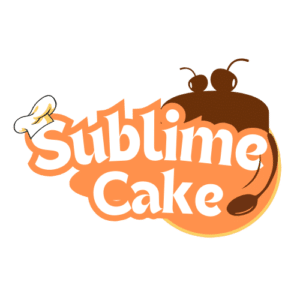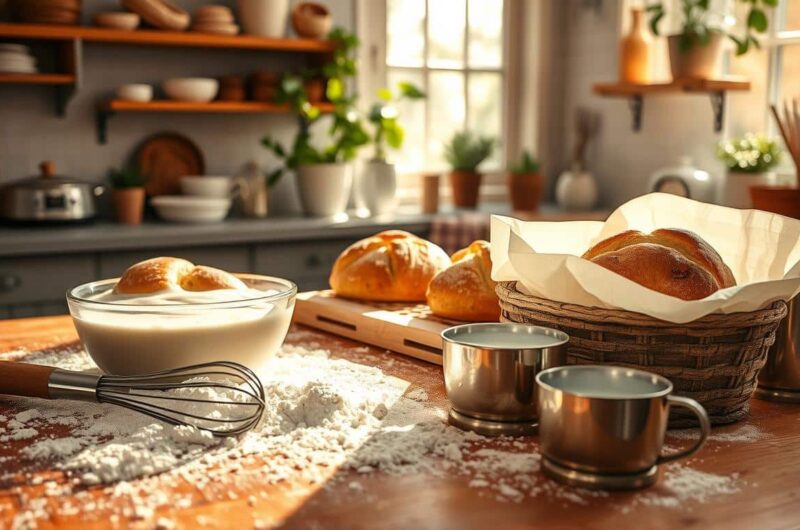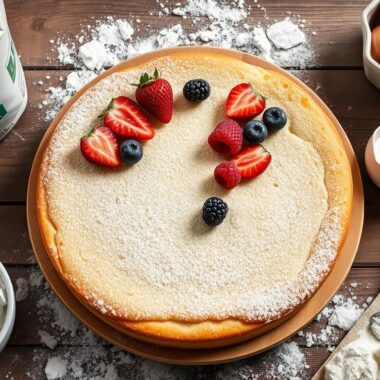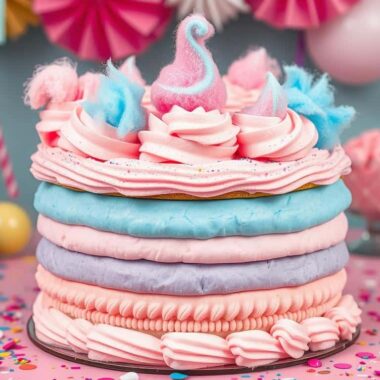Kefir is a fermented dairy product with a long history, over 2,000 years old. It has become a key ingredient in baking. This probiotic-rich ingredient can replace milk, buttermilk, or water in recipes. It adds a special texture and flavor to baked goods.
Kefir’s acidity, fat, and high protein make it great for improving the taste and texture of breads and pastries. It’s a top choice for bakers looking to enhance their creations.
A cozy kitchen scene with a wooden table covered in flour, a bowl of creamy kefir, whisk, and measuring cups. Soft sunlight streams through a window, illuminating freshly baked bread and pastries, with earthy tones and rustic textures. In the background, shelves filled with baking ingredients and plants add warmth to the atmosphere.
Key Takeaways
- Kefir is a fermented dairy product with a 2,000-year history in cooking and consumption.
- Kefir can be substituted for milk, buttermilk, or water in baking recipes.
- Whole milk kefir adds richness to baked goods without additional oil or shortening.
- Kefir is high in protein, enhancing the nutritional content of baked goods.
- Lifeway Kefir is up to 99% lactose-free, making it suitable for those with lactose intolerance.
Introduction to Kefir in Baking
Kefir is a fermented food that’s becoming popular in baking. It’s made from cow, goat, or sheep’s milk. The fermentation process changes the milk into a tangy, probiotic-rich drink with a fizzy feel.
Kefir can make baked goods taste better, feel softer, and be healthier. It’s full of live cultures and might help fight inflammation. This makes it great for adding to breads, muffins, cakes, and more.
Kefir is not just for drinking. It’s also good for marinating, making overnight oats, and as a dip or dressing base. In baking, it brings a special flavor and kefir benefits to both sweet and savory treats.
“Kefir is a natural probiotic that can transform the texture and flavor of baked goods, making them more moist, tender, and nutritious.”
Whether you’re a pro baker or new to baking with kefir, it’s a great ingredient to try. It can make your pancakes fluffy and your cakes moist. Kefir adds a healthy twist to your favorite recipes.
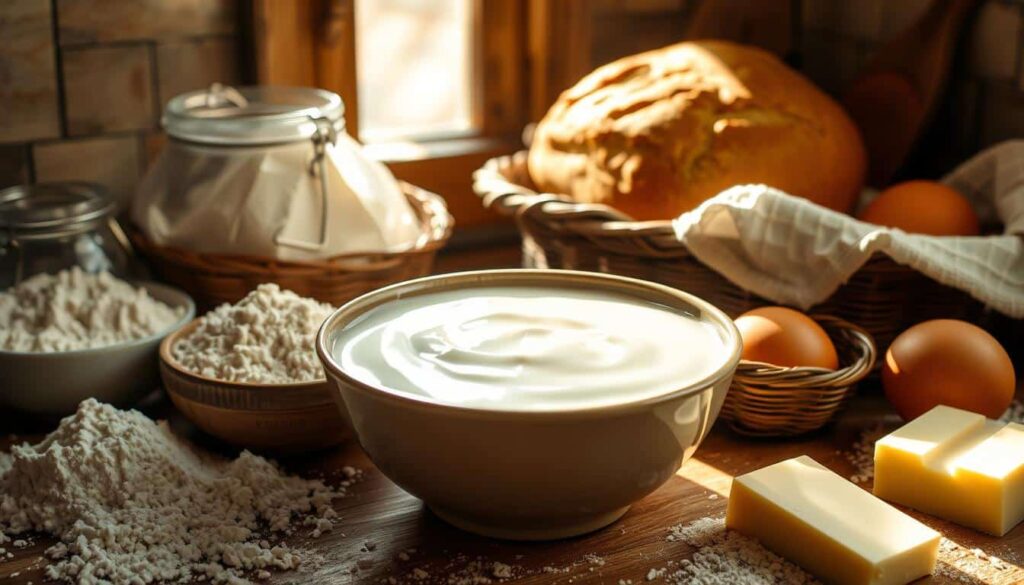
A rustic kitchen scene featuring a bowl of creamy kefir surrounded by fresh baking ingredients like flour, eggs, and butter, with a golden loaf of bread rising in the background, warm sunlight streaming through a window, soft textures and inviting colors.
The Science Behind Kefir
Kefir is a fermented dairy drink known for its unique taste and health benefits. The fermentation process of kefir is complex. It involves a mix of bacteria and yeasts. This mix is what makes kefir special in baking.
Understanding Kefir’s Fermentation Process
Kefir’s fermentation is a detailed process. It uses a mix of bacteria and yeasts. These tiny grains, called kefir grains, are full of microbes.
The main bacteria in kefir grains are Lactobacillus kefiranofaciens and Lacticaseibacillus paracasei. There are also yeasts like Saccharomyces cerevisiae and Candida kefyr. These microbes work together to ferment the kefir.
Nutritional Profile of Kefir
Kefir is mostly water, with about 80-90% moisture. It also has 0.2% fat, 3.0% protein, and 6.0% sugar. Plus, it has 0.7% ash and about 1.0% lactic acid and alcohol.
This mix of nutrients makes kefir great for baking. It adds to the texture and taste of baked goods.
How Kefir Impacts Dough Structure
Kefir’s acidity and protein help dough in baking. The fermentation makes lactic acid, which gives kefir its tangy taste. This acidity strengthens the gluten, making dough more tender and fluffy.
The protein in kefir also helps dough develop better. This leads to better rise and structure in baked items.
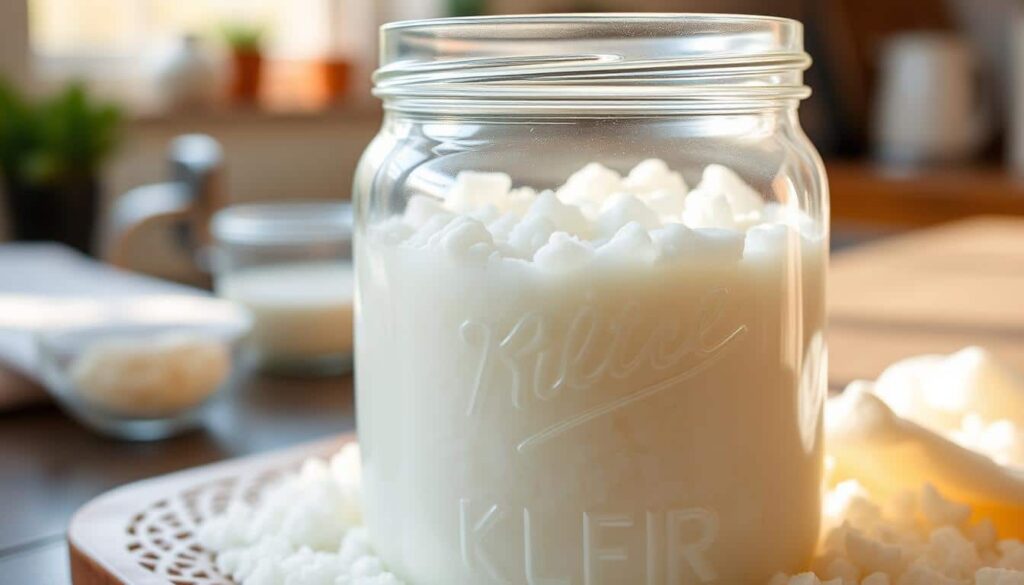
A close-up view of a glass jar filled with creamy, textured kefir grains surrounded by a soft background of natural light, showcasing the bubbling fermentation process, with hints of fresh milk and a cozy kitchen setting.
| Nutrient | Kefir (per 100g) | Yogurt (per 100g) |
|---|---|---|
| Moisture | 80-90% | 88% |
| Lipids | 0.2% | 3.3% |
| Protein | 3.0% | 5.7% |
| Sugars | 6.0% | 4.7% |
| Ash | 0.7% | 0.8% |
| Lactic Acid | 1.0% | 0.8% |
| Alcohol | 1.0% | 0% |
The taste of kefir can change with fermentation time. Shorter times make it sweeter, longer times make it sourer. Be careful if you’re lactose intolerant or allergic to dairy. Heating kefir can kill its live cultures.
Using Kefir as a Substitute in Recipes
Kefir is a versatile ingredient that can replace traditional dairy products in baking. It has natural acidity and probiotics, making it a great kefir substitute and buttermilk replacement in many recipes.
Replacing Buttermilk with Kefir
Kefir’s tangy flavor and thick consistency make it a perfect buttermilk replacement in baked goods. You can use it in pancakes, muffins, or quick breads. Just swap buttermilk with kefir in equal amounts. Kefir’s acidity works with baking soda to create a light and fluffy texture.
Kefir as a Milk Alternative
For dairy-free baking, kefir is a great milk alternative. Lifeway Kefir is up to 99% lactose-free, perfect for those with lactose intolerance. Using kefir instead of milk adds richness and creaminess, often eliminating the need for extra oil or shortening.
“Kefir has been used in cooking and consumption for over 2000 years, making it a time-tested and versatile ingredient for baking.”
Looking to add probiotics or make dairy-free baked goods? Kefir is a fantastic substitute for your favorite recipes.
Creative Recipes Using Kefir
Kefir is a nutrient-rich fermented dairy drink that’s great for baking. It’s not just for smoothies and dips. It can make baked goods like pancakes and bread even better. Discover how to use kefir in your baking.
Kefir Pancakes and Muffins
Begin your day with Kefir Apple Spice Pancakes. The tangy kefir makes them light and fluffy. The apples and spices add a sweet touch. For a special breakfast, make Cranberry Vanilla Quick Bread with kefir instead of milk.
Kefir is also great in muffins, adding moisture and a hint of tang. Try Pumpkin Spice Kefir Doughnuts for a healthier fall treat. Or, bake Gluten-free Savory Sage Biscuits for soups and stews.
Bread and Pastry Recipes with Kefir
Kefir is perfect for more than just breakfast. It makes yeasted breads soft and adds moisture to pastries. Try a Rosemary Kefir Loaf or a Blueberry Kefir Crostata for a tasty twist on desserts.
“Kefir is a game-changer in baking, adding both nutrition and delicious flavor to a wide range of recipes.”
Kefir’s probiotics and creamy texture make it a great choice for kefir recipes, baked goods with kefir, and healthy baking. Swap it for milk, buttermilk, or yogurt in your recipes. It opens up a world of possibilities.
Step-by-step expanded cooking instructions
Baking with kefir adds a tangy twist to your favorite recipes. Use it in place of buttermilk in equal amounts. For instance, if a recipe needs 1 cup of buttermilk, just use 1 cup of kefir instead.
Kefir is great for soaking flour or grains. Mix it with the dry ingredients and let it sit overnight. This makes the final product tender and flavorful.
When adding kefir to cooked recipes, do it towards the end. Its high protein can curdle if heated too long. Stir it in just before serving. Try different kefir fat levels to change the richness and texture of your baked goods.
| Kefir Cooking Tips | Benefits |
|---|---|
| Substitute kefir for buttermilk in equal amounts | Adds a tangy, probiotic-rich flavor |
| Use kefir to soak flour or grains overnight | Helps break down starches and proteins for a more tender texture |
| Add kefir towards the end of cooking to prevent curdling | Maintains the desired consistency and prevents protein-related issues |
| Experiment with different fat contents in kefir | Allows for varied levels of richness and texture in baked goods |
Follow these steps to fully enjoy kefir in your baking. It’s perfect for making fluffy pancakes, rich breads, or tasty pastries. Kefir’s unique qualities can take your baking to new heights of taste and nutrition.
Nutritional content (per 100g)
Kefir is a tangy, nutrient-rich fermented dairy drink. It’s packed with good stuff that’s great for baking. It has as much protein as milk, offering kefir nutrition like calcium, potassium, and magnesium.
In a 100-gram serving of kefir, you’ll find:
- Calories: 64
- Protein in kefir: 3.6 grams
- Fat: 4.5 grams
- Carbohydrates: 2.6 grams
- Kefir vitamins and minerals such as calcium (124 mg), vitamin A (6% of the daily value), and sodium (4% of the daily value)
Compared to yogurt, kefir has more protein and less sugar. It also has more probiotics, with about 5.6 billion CFUs per 100 grams. Yogurt has 3.3 billion CFUs.
| Nutrient | Kefir (per 100g) | Yogurt (per 100g) |
|---|---|---|
| Calories | 64 | 61 |
| Protein | 3.6g | 3.2g |
| Fat | 4.5g | 3.3g |
| Carbohydrates | 2.6g | 3.8g |
| Calcium | 124mg | 121mg |
| Probiotic Count (CFUs) | 5.6 billion | 3.3 billion |
The exact nutritional content of kefir can vary. It depends on the brand and type of milk used. But kefir always adds a lot of nutrients to your baking. It’s a great source of kefir nutrition, protein in kefir, and kefir vitamins and minerals.
FAQ
Is kefir good for baking?
Yes, kefir is great for baking. It adds a delicious and healthy twist to baked goods. It makes them taste better and feel softer.
Can I replace milk with kefir in baking?
Yes, you can use kefir instead of milk in most recipes. It makes baked goods richer without needing extra oil or shortening.
Can I use kefir instead of yogurt in baking?
Yes, kefir can replace yogurt in baking. It gives a tangy flavor and keeps baked goods moist.
Does heat destroy kefir?
Heat does kill the live probiotic cultures in kefir. But, it doesn’t harm the vitamins and minerals it has. These are still good for you when you bake with it.
What are the benefits of baking with kefir?
Baking with kefir makes baked goods better in many ways. It adds to their texture, taste, and health benefits. Kefir’s acidity, fat, and protein make baked goods tender and tasty.
How can I use kefir in baking?
You can use kefir in many baked goods like pancakes, waffles, muffins, and bread. It’s also good in crostatas and other pastries. You can swap it for buttermilk, milk, or water in recipes.
Conclusion
Kefir is a great addition to baking, making baked goods better in texture, taste, and health. It can replace many dairy products, making it perfect for both classic and new recipes. Trying kefir in cooking can make your baked goods healthier and tastier. The live cultures and nutrients in kefir offer many benefits of baking with kefir.
Even though store-bought kefir might not be as good as homemade, it still has important nutrients. Using kefir as a versatile ingredient in your recipes can make delicious and healthy treats. These treats can meet different dietary needs and tastes.
If you want to improve your breads, pancakes, or pastries, or try new kefir recipes, you have lots of options. Let kefir’s amazing qualities help you in your baking journey. Discover all the amazing things you can do with kefir in your baking.
